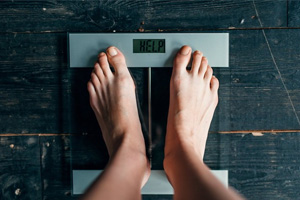How to maintain a healthy exercise routine at home?
Discover the secrets to staying active and fit at home with our comprehensive guide Learn how to create a successful exercise routine without the need for a gym or expensive equipment Start your journey to a healthier you today!
How to maintain a healthy exercise routine at home? Staying active and fit from the comfort of your own space is not only convenient but also essential for your overall well-being. Whether you're a busy professional, a stay-at-home parent, or simply prefer the privacy of your home, this guide will show you how to create and sustain an effective exercise routine without the need for a gym membership or fancy equipment. Discover the strategies, tips, and motivation to help you embark on a journey to better health and fitness, all within the familiar confines of your home.

Setting Clear Fitness Goals
Before embarking on your home exercise journey, it's essential to establish clear and achievable fitness goals. Setting the right goals will not only keep you motivated but also guide your entire exercise routine.
Identify Your Objectives
Begin by identifying what you want to achieve through your home workouts. Whether it's weight loss, muscle gain, improved cardiovascular health, flexibility, or stress reduction, pinpoint your specific objectives. This clarity is the foundation of setting the right goals.
Make Your Goals SMART
Ensure your fitness goals are SMART: Specific, Measurable, Achievable, Relevant, and Time-bound. Specificity helps you define your goal clearly, measurability allows you to track progress, achievability ensures it's realistic, relevance relates it to your overall health, and setting a time frame gives you a sense of urgency.
Short-Term and Long-Term Goals
Set both short-term and long-term goals. Short-term goals, achievable within weeks or months, keep you motivated and allow for regular successes. Long-term goals, like where you want to be in a year or more, provide a broader perspective and help you maintain consistency.
Break Down Your Goals
Break down your long-term goals into smaller, manageable milestones. This approach makes your fitness journey less daunting and gives you a sense of accomplishment with each milestone achieved. For example, if your long-term goal is weight loss, your milestones could be weekly or monthly weight targets.
Write Them Down
Putting your goals in writing makes them more tangible and increases your commitment. Create a fitness journal or use a digital app to track and document your goals, progress, and achievements. Regularly reviewing your written goals will help you stay on track.
Adjust and Evolve
As you progress, it's essential to be flexible with your goals. Some goals may need adjustment based on your changing fitness level or preferences. Regularly reassess and adapt your goals to ensure they remain motivating and aligned with your current situation.
Setting clear fitness goals provides the roadmap for your home exercise routine. It keeps you focused, motivated, and ensures that you are moving in the right direction towards achieving a healthier you.
Creating a Dedicated Workout Space
Having a dedicated workout space in your home is essential for maintaining a consistent exercise routine. It not only helps with organization but also creates a motivating environment for your workouts.
Selecting the Right Location
Choose an area in your home that's convenient and comfortable for exercise. It doesn't have to be large; a corner of a room or even your living room can work. Ensure the space has good ventilation and lighting to create an inviting atmosphere.
Clear the Clutter
Before you set up your workout space, declutter the area. Remove any items that could get in the way or cause distractions during your exercises. A clean and tidy space not only looks more appealing but also helps prevent accidents.
Use Suitable Flooring
Invest in appropriate flooring, such as exercise mats or rubber tiles. This not only protects your floor from wear and tear but also provides cushioning for your joints. It's especially important if you're doing high-impact exercises like jumping or running in place.
Organize Your Equipment
If you have workout equipment, keep it organized and easily accessible. Consider wall-mounted storage or shelves to keep dumbbells, resistance bands, or other fitness gear tidy. A well-organized space minimizes setup time and maximizes your workout time.
Create a Motivating Atmosphere
Add elements to your workout space that motivate you. This could be posters of your fitness role models, inspiring quotes, or anything that gets you in the exercise mood. A motivational atmosphere can make a significant difference in your commitment to regular workouts.
Set Up a Music System
Consider setting up a music system in your workout space. Music can be a powerful motivator during exercise. Create playlists with your favorite workout songs to keep your energy levels up and make your workouts more enjoyable.
Personalize Your Space
Your workout space is a personal area, so make it your own. Add personal touches that make you feel comfortable and encouraged to exercise. Whether it's a favorite plant, a dedicated workout towel, or a workout buddy, these personalizations can keep you coming back to your exercise routine.
Creating a dedicated workout space at home is an investment in your fitness journey. It provides a convenient and inviting environment, making it easier to stick to your exercise routine and achieve your fitness goals.
Choosing a Variety of Home Exercises
One key to a successful at-home exercise routine is variety. Diversifying your workouts not only keeps them interesting but also ensures that you engage different muscle groups, improve overall fitness, and prevent workout plateaus.
Cardiovascular Exercises
Cardiovascular exercises are vital for improving endurance and burning calories. At home, you can incorporate exercises like jumping jacks, high knees, or dancing to your favorite music. You can also use a skipping rope or invest in a stationary bike or treadmill for more options.
Strength Training
Strength training helps build muscle and increase your metabolic rate. Bodyweight exercises like push-ups, squats, and planks are effective at home. Consider using dumbbells, resistance bands, or kettlebells to add resistance to your workouts. These are versatile tools that can help you target various muscle groups.
Flexibility and Mobility
Don't forget about flexibility and mobility exercises. Incorporate yoga or Pilates into your routine to improve flexibility, balance, and posture. Stretching exercises help reduce the risk of injury and keep your muscles and joints in good condition.
HIIT Workouts
High-Intensity Interval Training (HIIT) is an efficient way to burn calories and boost fitness. HIIT involves short bursts of intense exercise followed by brief rest periods. You can do HIIT workouts with exercises like burpees, mountain climbers, or sprinting in place. These quick and intense routines are perfect for at-home workouts.
Online Workouts and Classes
Consider taking advantage of online workout resources. Many fitness trainers and platforms offer guided workout videos and live classes that you can follow along with at home. These options provide professional guidance and add variety to your routine.
Outdoor Activities
If you have access to an outdoor space, take advantage of it. Activities like jogging, cycling, or hiking are excellent ways to get some fresh air and exercise. Mixing in outdoor workouts adds variety to your routine and provides a change of scenery.
Periodization
To prevent boredom and continually challenge your body, consider incorporating a periodization strategy into your routine. Periodization involves changing your workout routines every few weeks to keep your body adapting and progressing. It might involve altering the exercises, intensity, or duration of your workouts.
By choosing a variety of home exercises, you not only keep your workouts engaging but also promote holistic fitness. Remember to balance cardiovascular exercises, strength training, flexibility, and include occasional HIIT sessions to maximize your home workout benefits.
Effective Home Workout Equipment
While you can achieve a great workout at home with minimal or no equipment, having the right tools can enhance your fitness routine, add variety, and help you achieve specific fitness goals.
1. Resistance Bands
Resistance bands are versatile and affordable. They come in various levels of resistance, making them suitable for people of all fitness levels. You can use them for strength training exercises, such as bicep curls, leg lifts, or lateral leg raises. They're lightweight, easy to store, and perfect for at-home workouts.
2. Dumbbells
Dumbbells are excellent for building strength and toning muscles. Having a set of dumbbells with different weight options allows you to perform a wide range of exercises. Common exercises include dumbbell squats, lunges, overhead presses, and bent-over rows. Start with lighter weights and gradually increase as you progress.
3. Yoga Mat
A yoga mat provides a comfortable surface for your workouts and is essential for floor exercises and stretching. It offers cushioning for your joints and helps prevent slipping during yoga, Pilates, or bodyweight exercises. Look for a durable, non-slip mat for long-lasting use.
4. Stability Ball
A stability ball is great for core workouts and balance training. You can use it for exercises like stability ball crunches, planks, and wall squats. The instability of the ball engages your core muscles, helping improve balance and core strength.
5. Jump Rope
A jump rope is a simple but effective cardio tool. It's an excellent addition to your home workout equipment for high-intensity interval training (HIIT) and improving cardiovascular fitness. Jumping rope burns calories, enhances coordination, and strengthens your legs and core.
6. Kettlebells
Kettlebells are versatile weights that provide a unique workout experience. They are great for functional strength training and can be used for exercises like kettlebell swings, goblet squats, and Turkish get-ups. Kettlebells work multiple muscle groups simultaneously, making your workouts more efficient.
7. Pull-Up Bar
If you have a sturdy doorway or wall, a pull-up bar is a valuable addition to your home gym. Pull-ups and chin-ups are excellent upper body exercises that target your back, arms, and shoulders. Many pull-up bars are easy to install and can be removed when not in use.
8. Foam Roller
A foam roller is an essential tool for recovery and self-myofascial release. It helps relieve muscle tightness and soreness by massaging trigger points. Regular foam rolling can improve flexibility and reduce the risk of injury, making it a valuable part of your home fitness equipment.
Effective home workout equipment can make your at-home fitness routine more efficient and enjoyable. Choose equipment that aligns with your fitness goals and preferences, and remember that a few well-chosen pieces can significantly enhance your workout experience.
Establishing a Consistent Routine
Consistency is the key to success in maintaining a healthy exercise routine at home. Here's a comprehensive guide on how to establish and maintain that much-needed consistency.
1. Set Clear Goals
Begin by defining your fitness goals. Whether you aim to lose weight, gain muscle, or improve your overall health, having specific, measurable goals will keep you motivated. Write down your goals and revisit them regularly to stay on track.
2. Create a Workout Schedule
Having a workout schedule is crucial for consistency. Decide on the days and times you'll exercise and treat these appointments with the same dedication as you would for any other commitment. Consistency in your schedule helps make exercise a habit.
3. Start Slow and Gradual
If you're new to exercise or returning after a break, start slowly. Gradually increase the intensity and duration of your workouts to avoid burnout or injury. Consistency is more achievable when you build your strength and stamina over time.
4. Mix Up Your Workouts
Variety is key to preventing boredom and maintaining consistency. Incorporate different types of exercises, such as cardio, strength training, and flexibility workouts. This variety keeps your interest alive and ensures that different muscle groups are engaged.
5. Use Accountability Tools
Consider using tools like fitness apps, fitness trackers, or workout buddies to help you stay accountable. These tools can track your progress, remind you of your workouts, and provide motivation through friendly competition or support from others.
6. Reward Yourself
Set up a reward system for achieving your exercise goals. Treat yourself to something enjoyable after reaching milestones, whether it's a favorite meal, a relaxing bath, or a new workout outfit. Rewards can reinforce your commitment to consistency.
7. Overcome Plateaus
It's common to hit plateaus in your fitness journey. When progress slows down or stalls, don't get discouraged. Instead, reassess your goals, tweak your routines, or seek advice from fitness experts. Overcoming plateaus is an essential part of maintaining your exercise routine.
8. Track Your Progress
Keep a record of your workouts and progress. A workout journal or app can help you see how far you've come and identify areas for improvement. Tracking your achievements can be motivating and reinforce the importance of maintaining consistency.
Establishing a consistent routine takes dedication and effort, but the results are worth it. By setting clear goals, creating a schedule, starting gradually, maintaining variety, using accountability tools, rewarding yourself, overcoming plateaus, and tracking your progress, you'll be well on your way to achieving and maintaining your fitness goals at home.
Balancing Cardio and Strength Training
For a well-rounded fitness routine at home, it's essential to strike the right balance between cardiovascular (cardio) and strength training exercises. This combination can help you achieve a variety of fitness goals while keeping your workouts interesting and effective.
The Importance of Cardio
Cardiovascular exercises are vital for enhancing your heart and lung health, burning calories, and improving endurance. They include activities that elevate your heart rate and make you breathe harder. Common at-home cardio exercises include jumping jacks, high knees, jogging in place, and dancing. Cardio workouts help with weight management, reduce the risk of chronic diseases, and increase overall fitness.
The Role of Strength Training
Strength training, on the other hand, focuses on building and toning muscles. It involves resistance exercises like bodyweight movements, dumbbell workouts, or using other equipment like resistance bands. Strength training increases your metabolic rate, helps you gain or maintain muscle mass, and improves bone density. It's essential for achieving a sculpted and toned appearance.
Finding the Right Balance
The ideal balance between cardio and strength training depends on your fitness goals. If you aim to lose weight, a mix of cardio and strength training is effective. Cardio burns calories, while strength training builds muscle, which boosts your metabolism. Aim for at least 150 minutes of moderate-intensity cardio per week and two to three days of strength training. As your goals change, you can adjust the ratio to suit your needs.
Incorporating Both in Your Routine
To balance cardio and strength training effectively, consider the following strategies:
- Combine workouts: Create workouts that include both cardio and strength exercises. For example, you can do bodyweight strength exercises with short cardio bursts in between.
- Alternate days: Dedicate certain days to cardio and others to strength training. This approach ensures that you focus on each aspect of fitness without feeling overwhelmed.
- Full-body workouts: Perform full-body strength training exercises that engage multiple muscle groups and elevate your heart rate. This offers a well-rounded workout experience.
- Hire a trainer: If you're unsure how to balance your workouts, consider working with a fitness trainer who can create a personalized plan based on your goals and preferences.
Listening to Your Body
It's important to listen to your body when balancing cardio and strength training. Overtraining can lead to fatigue, injuries, or burnout. Pay attention to your energy levels and allow time for rest and recovery. Adequate sleep and proper nutrition are equally important in achieving your fitness goals.
Balancing cardio and strength training is a key aspect of maintaining a healthy exercise routine at home. By understanding the importance of both types of exercise, finding the right balance, and incorporating a variety of workouts, you can achieve a well-rounded and effective fitness regimen.
Stay Motivated and Overcoming Plateaus
Motivation is a crucial factor in maintaining a healthy exercise routine at home. It's normal to face plateaus or periods of low motivation, but with the right strategies, you can overcome these challenges and stay on track with your fitness goals.
Finding Your Motivation
Motivation varies from person to person. Understanding what drives you can help you stay committed to your exercise routine. Your motivation might be:
- Health goals: The desire to improve your overall health, reduce the risk of chronic diseases, or enhance your mental well-being.
- Weight management: The goal to lose weight, maintain a healthy weight, or achieve specific body composition goals.
- Fitness achievements: The satisfaction of setting and accomplishing fitness milestones, such as running a certain distance or lifting a particular weight.
- Enjoyment: Finding joy in the physical activities you engage in, whether it's dancing, yoga, or sports.
- Accountability: Having a workout partner, trainer, or a support group that helps keep you on track.
Effective Motivation Techniques
Here are some techniques to maintain your motivation:
- Set achievable goals: Break down your fitness goals into smaller, manageable steps. Celebrate your successes along the way.
- Create a vision board: Visualize your goals by creating a vision board with images and quotes that inspire you.
- Reward yourself: Establish a reward system for reaching milestones. Treat yourself to something enjoyable as a motivational boost.
- Change up your routine: Introduce variety into your workouts to keep them interesting. Try new exercises or explore different types of physical activities.
- Join a fitness community: Participate in online fitness forums or local fitness groups to connect with like-minded individuals and stay motivated.
- Track your progress: Keep a workout journal or use fitness apps to monitor your achievements and set new goals.
Overcoming Plateaus
Plateaus are periods when you might feel like your progress has stalled. To overcome plateaus:
- Change your routine: Alter your workout intensity, duration, or type. Your body adapts to consistent routines, so change can rekindle progress.
- Set new challenges: Challenge yourself with more demanding exercises, increase weights, or aim for higher fitness levels.
- Rest and recover: Adequate rest is crucial for preventing burnout. Listen to your body, and don't hesitate to take breaks when needed.
- Seek professional guidance: Consult a fitness trainer or expert for advice on overcoming plateaus and pushing your limits.
Maintaining motivation and overcoming plateaus are essential aspects of a consistent home exercise routine. By identifying your motivation, implementing effective techniques, and understanding how to overcome plateaus, you can stay on course with your fitness goals and enjoy long-term success.
Proper Nutrition and Hydration
Nutrition and hydration are fundamental components of maintaining a healthy exercise routine at home. Your body's fuel and fluid needs play a significant role in your fitness success and overall well-being.
The Role of Nutrition
Nutrition provides the energy and nutrients your body needs for effective workouts and recovery. Here are some key aspects of nutrition to consider:
- Pre-Workout Fuel: Consuming a balanced meal or snack before your workout can enhance your performance. Include carbohydrates for energy and a source of protein for muscle support.
- Post-Workout Recovery: After exercise, refuel with a combination of protein and carbohydrates to aid in muscle recovery and replenish glycogen stores.
- Protein Intake: Protein is crucial for muscle repair and growth. Ensure you consume an adequate amount of protein through sources like lean meats, fish, dairy, or plant-based options.
- Healthy Fats: Incorporate healthy fats like avocados, nuts, and olive oil into your diet for overall health and energy during workouts.
- Vitamins and Minerals: A balanced diet should provide essential vitamins and minerals, but you may consider supplements if your diet lacks specific nutrients.
- Hydration: Staying properly hydrated is essential for overall health and exercise performance. Dehydration can lead to fatigue and reduced workout efficiency.
Hydration Matters
Hydration is a critical factor during exercise. When you work out at home, keep these hydration tips in mind:
- Pre-Hydrate: Start your workout properly hydrated by drinking water before you begin. This can help prevent dehydration during your session.
- During Exercise: Sip water during your workouts, especially if they are intense or lengthy. Sports drinks with electrolytes can be beneficial for extended, high-intensity exercise.
- Post-Workout Hydration: Rehydrate after your workout to replace the fluids lost through sweat. Water and electrolyte-rich beverages are good choices.
- Listen to Your Body: Pay attention to your body's signals. Thirst is a clear sign that it's time to drink more fluids. Dark urine may indicate dehydration.
A Balanced Diet
To maintain a balanced diet while exercising at home:
- Plan Meals: Create a meal plan that includes a variety of foods, such as fruits, vegetables, lean proteins, whole grains, and healthy fats.
- Control Portions: Be mindful of portion sizes to avoid overeating or under-eating. Proper portion control can support your fitness goals.
- Avoid Processed Foods: Minimize the intake of processed and sugary foods, as they can hinder your progress and overall health.
- Consult a Nutritionist: If you're uncertain about your dietary needs, consider consulting a nutritionist who can create a personalized nutrition plan.
Proper nutrition and hydration are crucial elements of maintaining a healthy exercise routine at home. By focusing on pre- and post-workout nutrition, staying well-hydrated, and following a balanced diet, you'll ensure that your body has the fuel and fluids it needs for successful home workouts and long-term fitness goals.
Rest and Recovery
Rest and recovery are essential components of a healthy exercise routine at home. Properly managing your downtime is crucial for improving performance, preventing injuries, and achieving long-term fitness goals.
The Importance of Rest
Rest is not a sign of weakness but a critical element of any exercise program. Here's why it's vital:
- Muscle Recovery: During rest, your muscles repair and grow, making them stronger for future workouts.
- Injury Prevention: Adequate rest reduces the risk of overuse injuries, strains, and sprains.
- Energy Restoration: Rest replenishes energy stores, allowing you to perform at your best during workouts.
- Mental Well-Being: Sleep and relaxation are essential for mental health, focus, and motivation.
Sleep and Its Impact
Sleep is a fundamental aspect of rest and recovery. Quality sleep directly affects your exercise routine:
- Sleep Duration: Aim for 7-9 hours of sleep per night to support overall well-being and workout performance.
- Deep Sleep: Deep sleep stages are essential for muscle recovery and growth.
- Sleep Hygiene: Create a sleep-conducive environment by keeping your bedroom dark, cool, and quiet.
- Consistent Sleep Schedule: Try to go to bed and wake up at the same times every day, even on weekends.
Active Recovery
While rest is crucial, active recovery can also be beneficial. Active recovery involves low-intensity exercises or activities that promote blood circulation and muscle relaxation:
- Stretching: Gentle stretching exercises can improve flexibility and alleviate muscle tightness.
- Yoga: Yoga is an excellent way to promote flexibility, balance, and relaxation during recovery days.
- Walking or Cycling: Low-impact activities like walking or cycling can help relieve muscle soreness and improve blood flow.
- Swimming: Swimming is a full-body workout that can be gentle on your joints and muscles.
Signs of Overtraining
Recognizing the signs of overtraining is crucial for injury prevention and effective recovery:
- Decreased Performance: A noticeable drop in performance can be a sign of overtraining.
- Chronic Fatigue: Persistent fatigue, even after rest, may indicate overtraining.
- Recurrent Injuries: Frequent injuries or nagging pain can result from overtraining.
- Emotional Changes: Overtraining can lead to mood swings, irritability, and disrupted sleep patterns.
Properly managing rest and recovery is integral to a sustainable and healthy exercise routine at home. By understanding the significance of rest, prioritizing sleep, incorporating active recovery, and recognizing signs of overtraining, you can optimize your fitness journey and achieve your long-term goals.
Tracking Your Progress
Tracking your progress is a valuable component of maintaining a healthy exercise routine at home. It helps you stay motivated, make informed adjustments, and celebrate your achievements along the way.
Choosing the Right Metrics
When it comes to tracking your progress, selecting the appropriate metrics is crucial. Here are some key metrics to consider:
- Body Measurements: Monitor changes in your weight, body fat percentage, and measurements of key body areas to gauge physical transformation.
- Strength and Endurance: Keep records of your strength gains, such as the weight lifted and the number of repetitions. Track how your endurance improves over time.
- Flexibility: Use flexibility tests to assess improvements in your range of motion and reduced muscle tightness.
- Cardiovascular Fitness: Record changes in your heart rate, recovery time, or the distance covered during cardio workouts.
- Mood and Energy: Track your emotional well-being, energy levels, and sleep quality to understand the impact of exercise on your overall health.
Keeping a Workout Journal
A workout journal is an effective tool for tracking your progress. Here's how to create and maintain one:
- Record Workouts: Write down the details of each workout, including exercises, sets, repetitions, and any modifications made.
- Note Achievements: Celebrate milestones, such as lifting heavier weights or completing a challenging workout.
- Assess Fatigue and Recovery: Document how you feel before and after each workout. This can help you recognize signs of overtraining.
- Set Goals: Use your journal to set specific, measurable, and time-bound fitness goals, and track your progress toward achieving them.
Utilizing Technology and Apps
Technology can simplify the process of tracking your progress. Consider using fitness apps, wearable devices, or online platforms that allow you to:
- Automatically Log Workouts: Many apps can automatically record your workout data, including duration, heart rate, and calories burned.
- Set Reminders: Use apps to schedule your workouts and receive reminders to stay consistent.
- Visualize Data: Review charts and graphs that illustrate your progress over time, making it easier to identify trends and areas for improvement.
- Connect with a Community: Some apps provide a social aspect, allowing you to connect with like-minded individuals for support and motivation.
Periodic Assessments
Regular assessments help you gauge your progress and adjust your workout routine as needed. Here are some tips:
- Set Assessment Dates: Plan periodic assessments, such as every four weeks, to track your achievements and make adjustments.
- Measure Key Metrics: Reassess your chosen metrics and compare the results to your baseline measurements.
- Adjust Your Goals: Based on your progress, modify your goals and workout plan to continue challenging yourself and achieving results.
Tracking your progress is an integral part of maintaining a healthy exercise routine at home. By choosing the right metrics, keeping a workout journal, utilizing technology and apps, and conducting periodic assessments, you'll stay motivated and ensure that your fitness journey is on the right track.
FAQs: Maintaining a Healthy Exercise Routine at Home
Q1: What's the importance of tracking progress in a home exercise routine?
A1: Tracking progress helps you stay motivated, make informed adjustments, and celebrate your achievements. It provides a clear picture of your fitness journey.
Q2: How often should I assess my progress when working out at home?
A2: Periodic assessments are typically done every four weeks. They allow you to measure achievements and adjust your goals and workout plan accordingly.
Q3: Can I use technology and apps for tracking progress effectively?
A3: Yes, technology and fitness apps are excellent tools for tracking progress. They can automatically log workouts, set reminders, and visualize data to help you stay on track.
Q4: What should I include in my workout journal when monitoring my progress?
A4: Your workout journal should include details of each workout, achievements, assessments of fatigue and recovery, and your fitness goals for reference.
Q5: Are there specific metrics to consider when tracking progress in an at-home exercise routine?
A5: Yes, you can consider metrics like body measurements, strength and endurance gains, flexibility, cardiovascular fitness, and even mood and energy levels as key indicators of progress in your at-home workouts.
Previous: first page










